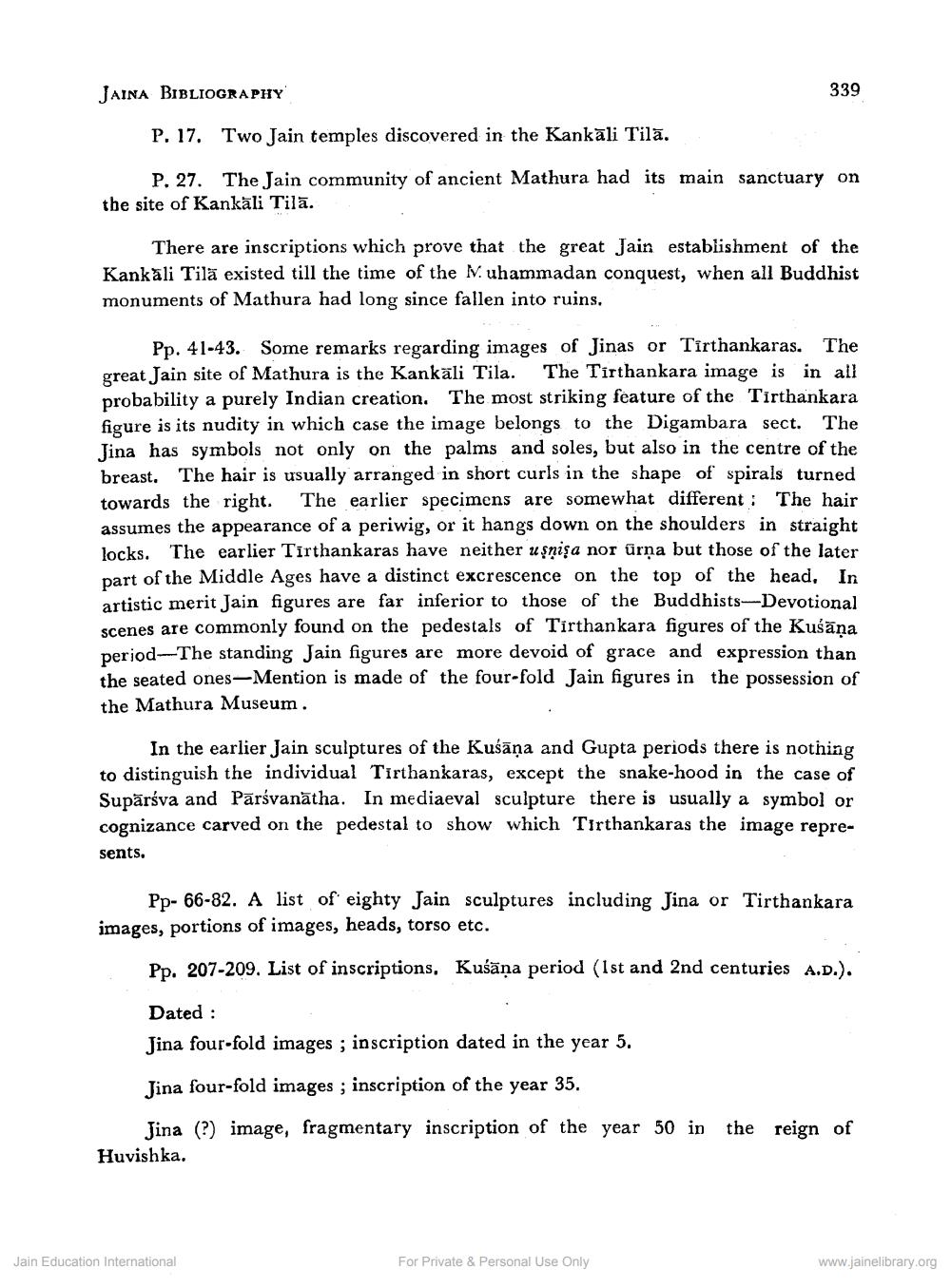________________
JAINA BIBLIOGRAPHY
P. 17. Two Jain temples discovered in the Kankali Tila.
P. 27. The Jain community of ancient Mathura had its main sanctuary on the site of Kankali Tilā.
339
There are inscriptions which prove that the great Jain establishment of the Kankali Tilä existed till the time of the Muhammadan conquest, when all Buddhist monuments of Mathura had long since fallen into ruins.
Pp. 41-43. Some remarks regarding images of Jinas or Tirthankaras. The great Jain site of Mathura is the Kankali Tila. The Tirthankara image is in all probability a purely Indian creation. The most striking feature of the Tirthankara figure is its nudity in which case the image belongs to the Digambara sect. The Jina has symbols not only on the palms and soles, but also in the centre of the breast. The hair is usually arranged in short curls in the shape of spirals turned. towards the right. The earlier specimens are somewhat different: The hair assumes the appearance of a periwig, or it hangs down on the shoulders in straight locks. The earlier Tirthankaras have neither uşnişa nor urna but those of the later part of the Middle Ages have a distinct excrescence on the top of the head. In artistic merit Jain figures are far inferior to those of the Buddhists-Devotional scenes are commonly found on the pedestals of Tirthankara figures of the Kusana period-The standing Jain figures are more devoid of grace and expression than the seated ones-Mention is made of the four-fold Jain figures in the possession of the Mathura Museum.
In the earlier Jain sculptures of the Kušana and Gupta periods there is nothing to distinguish the individual Tirthankaras, except the snake-hood in the case of Supariva and Parsvanatha. In mediaeval sculpture there is usually a symbol or cognizance carved on the pedestal to show which Tirthankaras the image repre
sents.
Pp- 66-82. A list of eighty Jain sculptures including Jina or Tirthankara images, portions of images, heads, torso etc.
Pp. 207-209. List of inscriptions, Kušana period (1st and 2nd centuries A.D.).
Dated:
Jina four-fold images; inscription dated in the year 5.
Jina four-fold images; inscription of the year 35.
Jina (?) image, fragmentary inscription of the year 50 in the reign of Huvishka.
Jain Education International
For Private & Personal Use Only
www.jainelibrary.org




